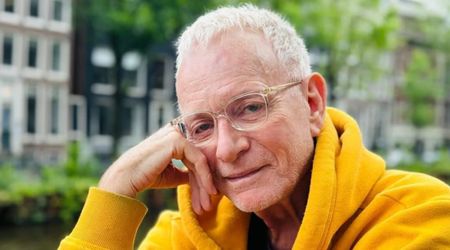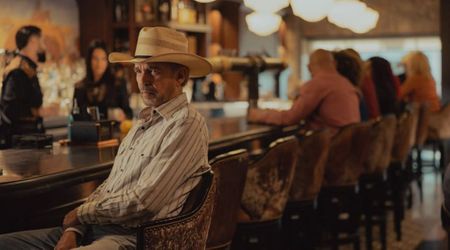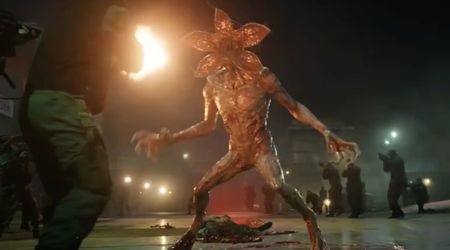'East Lake Meadows: A Public Housing Story': Real-life history behind the PBS film documentary by Ken Burns

East lake located in Atlanta is famously known for the historic bungalows and cottages from the 1910-40s era. In the 1970s, the East Lake meadows opened its door for low-income residents. it was called the Public Housing Project. With the introduction of the 650-unit public housing project, housing rates declined but violence and crime rates increased. Thousands of low-income African Americans had come to live in the Project, inspiring the subject of the film documentary called ‘East Lake Meadows: A Public Housing Story’ produced by Ken Burns and directed by Sarah Burns and David McMahon.
The complex, once known as 'Little Vietnam' for its violence and crime, was troubled from the outset by disinvestment, poverty and with white people leaving the place. The project was home to thousands of children and families striving to build a better life.
With the white flight from the place, many businesses and clubs moved as well, including the move of Atlanta Athletic Club to the north, leaving the golf course land to build the projects on. This also left the residents of the project with less access to the grocery stores and fresh produce as people moved to the north away from the projects. It left the residents in poverty, facing unemployment, which could be the reason for the increase in drug intake, crime rates and violence.
Initially, the project was praised for the envisioned spacious units and new construction but because of the lack of funding and poor construction, it left the projects and surrounding landscapes in despair leading to a decrease in the quality of life. East Lake Meadows had become uninhabitable.

Sarah Burns explained to NPR why East Lake Meadows was particularly chosen: “They put [East Lake Meadows] there both because that was cheap land to use, but also because it was on the edge of the city. This was 1970. We're talking about a time when, by then, the population in public housing was that lowest income, mostly African-American population. And so, the city was not interested in having that front and center in the middle of the city. This was an isolated location as this neighborhood transformed on the edge of the city, [with] little public transit, where we could just kind of push the problems that were inevitable there, and ignore them.”
In 1995, a group of people led by a real estate developer and a former resident of the East Lake, Thomas Cousins, partnered with the City of Atlanta to demolish the projects and to build a new mixed-income residency for the people of Atlanta. It did not just seem like houses for the poor like the Public Housing Project.
The demolishment and the rebuilding of public housing, new schools, a grocery store and a bank saw a rise in good morale and a decrease in the crime and violence rate. The new mixed development began to attract young urbanites who eagerly bought the charming homes and changed the residential character of the area, leading to the East Lake housing rates to inflate.
Burns wanted to tell the story of the people living in the projects and their journey. Burns shared that the film allowed her team to dig further into how segregation and racism continue to affect people’s experiences in the United States. She explained that public housing projects do not always solve the problems they aim to ameliorate. “This is a place that is set up to fail,” she said of the project. “We tend to blame the people who live there for [the] problems as if it’s their fault that the housing is not being maintained when it’s actually the government that’s supposed to be doing that.”
The documentary revolves around the impact of racism on the housing project as well. Burns said, "It deals with the larger systemic issues, questions about segregation and racism, that play into so much of our lives and our experiences in this country."
It tells the story of dozens of families including the Lightfoot family and four generations of the family of Eva Davis, the long-time tenant leader at East Lake Meadows. Many of them had no other place to go continued to call it home, creating strong bonds despite the many challenges they faced.

Lawrence Lightwood said to NPR, “Home is where the love is. You don't look at the walls, you look at the people in the house — you know, my brother, my sister, my mom. I'm gonna say, 95% of the people out there were good people. But you only heard about that small percentage that stayed in the news. You know, when the kids are out there, playing football in the street and enjoying themselves, no cameras are going to be around. Unless somebody gets shot. This is supposed to be the country of dreams. [Just] because somebody is poor, and presumed ignorant, does not mean they don't have dreams.”
‘East Lake Meadows: A Public Housing Story’ gives voice to the most marginalized people of the society and raises critical questions about how the project created concentrated poverty and limited housing opportunity for African Americans.
‘East Lake Meadows: A Public Housing Story’ will air on Tuesday, March 24, at 8/7c on PBS. You can watch the official trailer here.










